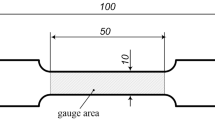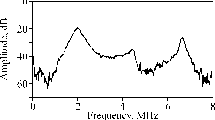Conclusions
-
1.
A study has been made of the effect of sound vibrations during the production of protective tungsten coatings from the vapor phase on the properties of the coatings.
-
2.
The limits of the strength of adhesion of the coating to the base and the magnitude of the residual stresses have been determined.
-
3.
It was found that the introduction of sound vibrations into the reaction chamber during the deposition of tungsten improves the structure of the coatings obtained and increases the strength of the bond between the coatings and the base.
Similar content being viewed by others
Literature Cited
A. Kh. Turner, V. S. Pleshakov et al., “Protection of ÉVP resonator systems with tungsten deposited from the vapro phase,” Élektronnaya Tekhnika, Ser. 10, No. 7, (47) (1971).
Yu. N. Golovanov, S. N. Kadyrmet, et al., “Preparation of tungsten tubes by deposition from the vapor phase, Électronnaya Tekhnika, Ser. 10, No. 3 (43) (1971).
K. Powell, J. Oxley, and J. Blocher, Deposition from the Vapor Phase [Russian translation], Atomizdat, Moscow (1970).
Yu. N., Golovanov, R. K. Chuzhko, et al., “Effect of impurities on the recovery of the mechanical properties of tungsten reduced by hydrogen from tungsten hexafluoride,” in: High-Temperature and Heat-Resistant Coatings [in Russian], Nauka, Leningrad (1969).
I. N. Kidin, V. I. Andryushechkin, and P. I. Gorbunov, “apparatus for determining residual stresses based on the PMT-3 machine,” Zavod. Lab., No. 1 (1971).
K. Agte and I. Batsek, Tungsten and Molybdenum [Russian translation], Énergiya, Moscow-Leningrad (1964).
Encyclopedic Handbook of Mechanical Engineering. Vol. 3: Engineering Materials [in Russian], Mashgiz, Moscow (1947).
M. A. Lebedinskii Electrovacuum Materials [in Russian], Énergiya, Moscow-Leningrad (1966).
I. A. Birger, Residual Stresses [in Russian], Mashgiz, Moscow (1963).
Additional information
All-Union Scientific-Research Institute of Engineering, Moscow. Translated from Problemy Prochnosti, No. 2, pp. 108–110, February, 1975.
Rights and permissions
About this article
Cite this article
Dolgopolov, V.V., Shilov, S.E. Determination of the stress-intensity coefficients in cracked structures by the photoelastic method. Strength Mater 7, 244–250 (1975). https://doi.org/10.1007/BF01522160
Received:
Issue Date:
DOI: https://doi.org/10.1007/BF01522160




